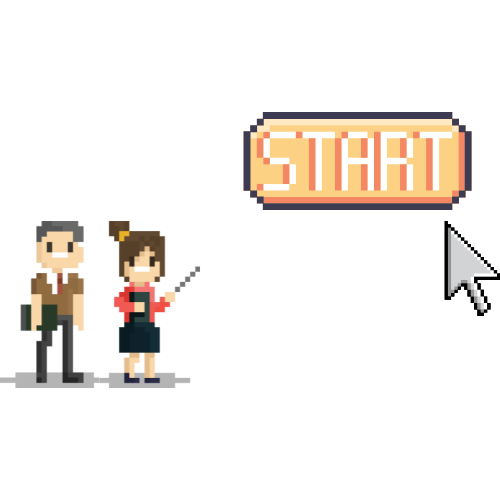The executive boardroom erupts in tension. Your innovation budget just got slashed by 40%, your star engineer is threatening to quit, and three competing departments are demanding priority for their "game-changing" projects. You have two hours to present a revised strategy that satisfies everyone, or at least keeps the company from imploding.
Author Attribution
Welcome to the reality of strategic thinking in modern organizations. Yet most strategic thinking training still happens in sterile conference rooms, analyzing case studies that happened to other companies, in other industries, years ago.
It's time for a revolution.
The Death of Passive Strategic Thinking Training
Traditional strategic thinking training follows a predictable pattern: frameworks on whiteboards, Harvard Business School case studies, and role-playing exercises that feel more like theater than business reality. Participants leave with notebooks full of theories and little sense of how strategy actually unfolds when stakeholders disagree, information is incomplete, and time is running out.
The most successful organizations are abandoning this approach entirely. Instead, they're embracing immersive strategic simulations that mirror the complexity, pressure, and political dynamics of real business environments.
Consider this: when pilots learn to fly, they don't just read about aviation principles. They spend countless hours in flight simulators that recreate emergency scenarios, equipment failures, and challenging weather conditions. Why should strategic thinking be any different?
What Makes Strategic Thinking Training Actually Work
The best strategic thinking training programs share several characteristics that set them apart from traditional approaches:
Emotional Authenticity
Real strategy happens under pressure. Effective training recreates the stress, time constraints, and conflicting stakeholder demands that strategic thinkers face daily. When your heart rate increases because a key stakeholder just rejected your proposal, you're experiencing authentic strategic pressure.
Systemic Complexity
Strategic decisions don't happen in isolation. They ripple through organizations, affecting budgets, relationships, and future opportunities. Advanced training programs simulate these interconnections, showing participants how strategic choices create cascading consequences across multiple business dimensions.
Adaptive Resistance
The best strategic simulations fight back. When participants try to game the system or choose overly safe strategies, the environment evolves to challenge their assumptions. This adaptive resistance mirrors how real markets and organizations respond to strategic moves.
Stakeholder Dynamics
Strategy isn't just about analysis, it's about influence, negotiation, and building coalitions. Cutting-edge training integrates authentic stakeholder interactions where participants must convince skeptical executives, negotiate with resistant departments, and manage competing agendas.

Why Innovation Leaders Need Different Strategic Thinking Training
Innovation professionals face unique strategic challenges that traditional training doesn't address:
- Portfolio Complexity: Managing multiple innovation initiatives with uncertain outcomes requires different strategic thinking than optimizing existing operations.
- Stakeholder Skepticism: Innovation leaders must constantly justify investments in unproven concepts to risk-averse executives and shareholders.
- Resource Competition: Innovation departments typically compete for limited resources against established business units with proven track records.
- Uncertainty Navigation: While most business strategy deals with known variables, innovation strategy must account for technological disruption, changing customer behaviors, and emerging market dynamics.
The Strategy Quest Approach: Strategic Thinking in Action
At Strategy Quest, we've reimagined strategic thinking training around a simple premise: you can't learn strategy by talking about it, you have to live it.
Our participants lead fictional innovation departments in companies facing real-world challenges. They don't discuss stakeholder management in theory; they experience it when the CFO questions their budget proposal or when engineering pushes back on project timelines.
Beyond War Games: The Power of Internal Politics
While traditional business war games pit teams against external competitors, we've discovered something more powerful: simulating internal organizational dynamics. Participants must navigate:
- Cross-functional tensions between innovation, operations, and finance
- Resource negotiations where every dollar spent on innovation is a dollar not available for proven initiatives
- Executive alignment challenges when senior leaders have conflicting strategic priorities
- External partner management where strategic decisions affect supplier relationships and customer expectations
This internal focus reflects the reality that most strategic initiatives fail not because of external competition, but because of internal execution challenges.

From Simulation to Real-World Impact
The ultimate test of strategic thinking training isn't what happens during the program, it's whether participants think and act differently when they return to their actual roles.
Our post-simulation tracking focuses on three critical areas:
- Strategic Decision-Making Maturity: Moving from reactive problem-solving to proactive opportunity identification and systematic risk assessment.
- Stakeholder Engagement Agility: Developing the ability to rapidly understand different stakeholder perspectives and build coalitions around strategic initiatives.
- Portfolio Throughput Clarity: Gaining clarity on how to prioritize competing opportunities and allocate resources for maximum strategic impact.
Ready to Experience Strategic Thinking?
The gap between knowing strategic frameworks and thinking strategically under pressure is the difference between theory and practice.
If you're ready to move beyond traditional training approaches and experience strategic thinking in action, consider how immersive simulations could transform your team's strategic capabilities.
Because in today's complex business environment, strategic thinking isn't just another skill, it's the skill that determines whether organizations thrive or merely survive.

